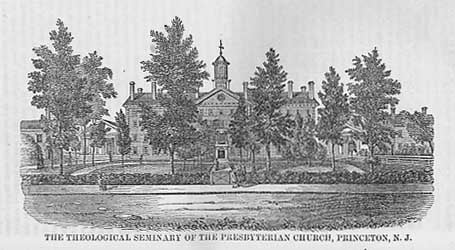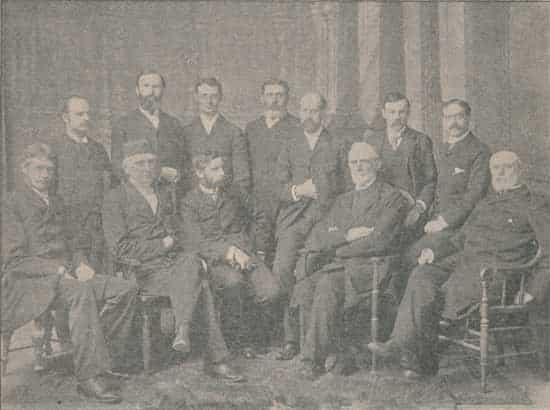This Day in Presbyterian History:
Eighteen Twelve was a Very Good Year
It was clear that something had to be done. Princeton College was not being the source any longer for Presbyterian ministers, and for that matter, any ministers. The school had turned into a secular school for careers, like law, politics, and education.
The reason for this was varied, Some saw the problem in the new president, Samuel Stanhope Smith. It wasn’t that he had no qualifications for the presidency. He himself was a graduate of the college. He had started what later became Hampden-Sydney College in Virginia. He had tutored under his father-in-law John Witherspoon as the Vice-President of Princeton, when the latter was unable physically to do it. So he had all the academic qualifications.
Of more troublesome however were questions about his lack of Calvinistic distinctives. It seemed that they were in word only as there were suggestions of an emphasis on free will in man plus scientific suggestions in place of supernatural miracles. Add to that a student rebellion, the trustees were beginning to have questions on his ability to solve these challenges in the right way.
With 400 vacant pulpits in the Presbyterian Church, the sentiment began to build for a separate theological seminary separate from Princeton College as early as 1800. By 1805 and 1808, each General Assembly was being besieged with calls for more ministers, on the mission field and in the congregations of the land. An overture to decide what kind of school was sent to the presbyteries. While hardly overwhelming for any one choice, by 1811, over $14,000 had been raised for the prospective seminary. Any professor would have to subscribe to the Westminster Standards, and the Form of Government of Presbyterianism.
 On August 12, 1812, while the nation was already at war against Great Britain, people packed the town’s Presbyterian Church for the inauguration of Dr. Archibald Alexander as the first professor of Princeton Theological Seminary. He had been chosen by the General Assembly. He preached his inaugural sermon for the worshipers, including taking his vows regarding the confessional standards and the Presbyterian form of Government. The seminary had begun, with three students. It would soon pick up and begin to send out laborers into the fields, which were white unto harvest.
On August 12, 1812, while the nation was already at war against Great Britain, people packed the town’s Presbyterian Church for the inauguration of Dr. Archibald Alexander as the first professor of Princeton Theological Seminary. He had been chosen by the General Assembly. He preached his inaugural sermon for the worshipers, including taking his vows regarding the confessional standards and the Presbyterian form of Government. The seminary had begun, with three students. It would soon pick up and begin to send out laborers into the fields, which were white unto harvest.
Words to live by: Every reader of this historical blog should read the fine summary of Dr. David Calhoun’s two-volume work on Princeton Seminary, published by the Banner of Truth Trust in Carlisle, Pennsylvania. Filled with persons, places, and events from the founding of the school in 1812 to 1929, when it ceased to be a Reformed biblical seminary, this school was the pillar of orthodoxy for the Presbyterian Church. When we forget the past, we lose hope for the present and the future. When we study the past, we learn how to live in the present and the future. You will not be able to put down the two books. The contributor promises you that!
 Faculty of the Princeton Theological Seminary, 1896: G.T. Purves, J.D. Davis, G. Vos, B.B. Warfield, W.B. Greene, Jr., J.H. Dulles, H.W. Smith, F.L. Patton, W.M. Paxton, C. Martin, W.H. Green, J. De Witt.
Faculty of the Princeton Theological Seminary, 1896: G.T. Purves, J.D. Davis, G. Vos, B.B. Warfield, W.B. Greene, Jr., J.H. Dulles, H.W. Smith, F.L. Patton, W.M. Paxton, C. Martin, W.H. Green, J. De Witt.
Through the Scriptures : Jeremiah 24 – 26
Through the Standards: The tenth commandment: sins forbidden
WLC 148 — “What are the sins forbidden in the tenth commandment?
A. The sins forbidden in the tenth commandment are, discontentment with our own estate; envying and grieving at the good of our neighbor, together with all inordinate motions and affections to anything that is his.”
WSC 81 — “What is forbidden in the tenth commandment?
A. The tenth commandment forbids all discontentment with our own estate, envying or grieving at the good of our nature, and all inordinate motions and affections to any thing that is his.”
Image sources : The Church at Home and Abroad, 19.4 (April 1896): 339.
Tags: General Assembly, Presbyterian Church, Princeton College, Princeton Theological Seminary

No comments
Comments feed for this article